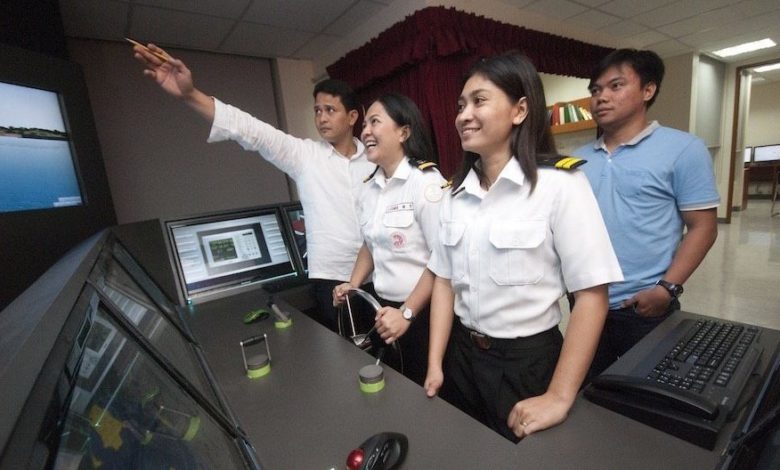What training can and cannot do

“If you think safety is expensive, try an accident!” – Stelios Hadji-Ionannou. Andrew Craig-Bennett loves aviation training, less so how we go about it these days in shipping.
We are not the only transport business which spends time and effort on training. Road does some, rail does some , but the civil aviation business seems to make more use of its training facilities than we do of ours. Fair enough – you cannot conduct an evacuation drill with a cabin full of passengers at 30,000 ft. Aviation knows that it ought to take in-service training seriously, and we not so sure about it. For us, training – as opposed to getting a certificate of competency – can seem to be a nice to have, and we look to find ways to look good whilst spending as little as possible. Aviation sees things differently, and spends far more, but is subject to the same temptation that we are – the temptation, common in all transport businesses, to cut costs, because we can’t do much to increase our revenues – we are all of us price takers.
The Catch-22 of onboard training is that the ships that need it least do it best. The master who walks up to a fire party who are all dressed up for ‘Board of Trade Sports’ and says: “You, you and you are dead – fall out – the rest of you –put the fire out!” – making people think for themselves as part of a team – is training realistically, but you won’t find this happening on a ship that really needs it.
All too often, we send a box of computer-based training (CBT) to a ship and tell the people onboard her to improve the shining hour that they would otherwise spend in their cabins staring at the bulkhead or, more likely, playing a video game, by watching an exciting CBT instead. Costs peanuts, the box that says “watched” gets ticked and the shore manager can pat himself on the back because he has “trained people”.
Alas, the companies that make CBTs don’t have the turnover of the companies that make first person shooter or car theft video games, so the resources that are devoted to meritorious shipboard CBTs are correspondingly less, which is why Rule 17 is less exciting than Grand Theft Auto.
This is assuming that the CBT is up to date. Some of them are re-issues of stuff older than some of the people watching them. A good back catalogue of CBTs is a money spinner.
I am one of those tiresome people who thinks that we can learn from aviation – I’ve even got a certificate that says I can teach bridge resource management (if I wanted to learn it, I would not learn it from me!) – but sometimes aviation can teach us what not to do, as well as what to do.
Aviation has taken up the study this in your own time CBT approach, much loved in shipping companies, in order to cut down on really expensive full mission simulator time. One of the issues with the Boeing 737-Max was that the new model had been carefully designed in such a way that cockpit crew could convert onto the new model using laptop-based CBT aids rather than expensive simulator time, and this was a big selling point for the new model. Was the tail perhaps wagging the dog?
Did the two B737 crashes which were in part the consequence of this approach cause shipowning companies to think at all about the implications for us? If they did, I don’t recall it. Do you?
The real difference between training in civil aviation and in merchant shipping is that everyone in the crew of a plane knows who she or he works for, who their staff manager is, and expects to carry on working for the same outfit, all going well. The seafarer has, all too often, no such assurance.
Training works much better when it is carried out ashore in training centres, which generally have full mission simulators for bridge issues such as the collision rules and ship handling, and may have them for cargo handling on tankers and gas carriers also. One reason for this is that the trainee is not tired or distracted and another is that the trainee can interact with others and with instructors
In shipping, this seldom happens both because the cost of shore-based training is considered exorbitant and because half the time the crew who need training –and everyone does – don’t work for the same company. They may work for a shipmanager, but they may not go back to ships owned by the same owner, or there may be some sort of silly gesture like keeping the top four together which is utterly pointless (what about the junior officers?) but sounds good. All too often the people on a ship which is not under third party management are considered as in some sense the property of the manning agency which supplied them. We have gone right back to all the abuses that 19th century legislation set out to abolish.
Throwing a box of CBTs at badly paid, demoralised people who are never going to develop an esprit de corps is going to do absolutely nothing.

Enjoyed your words as ever Andrew. I too am ‘tiresome’ (I prefer ‘evangelical’) when it comes to the marine/aviation overlap. Apart from common insurers and the top of the list desire to cover up the tail/funnel markings after catastrophe, there is a lot that should be taught and shared pre and post accident. Its the ‘cargo’ on the planes that drives the level and depth of training in the aviation sector. It was once the case that the value of airborne cargo in seats was greater than that carried by water. That is no longer always the case.
ATB
Chris Beesley